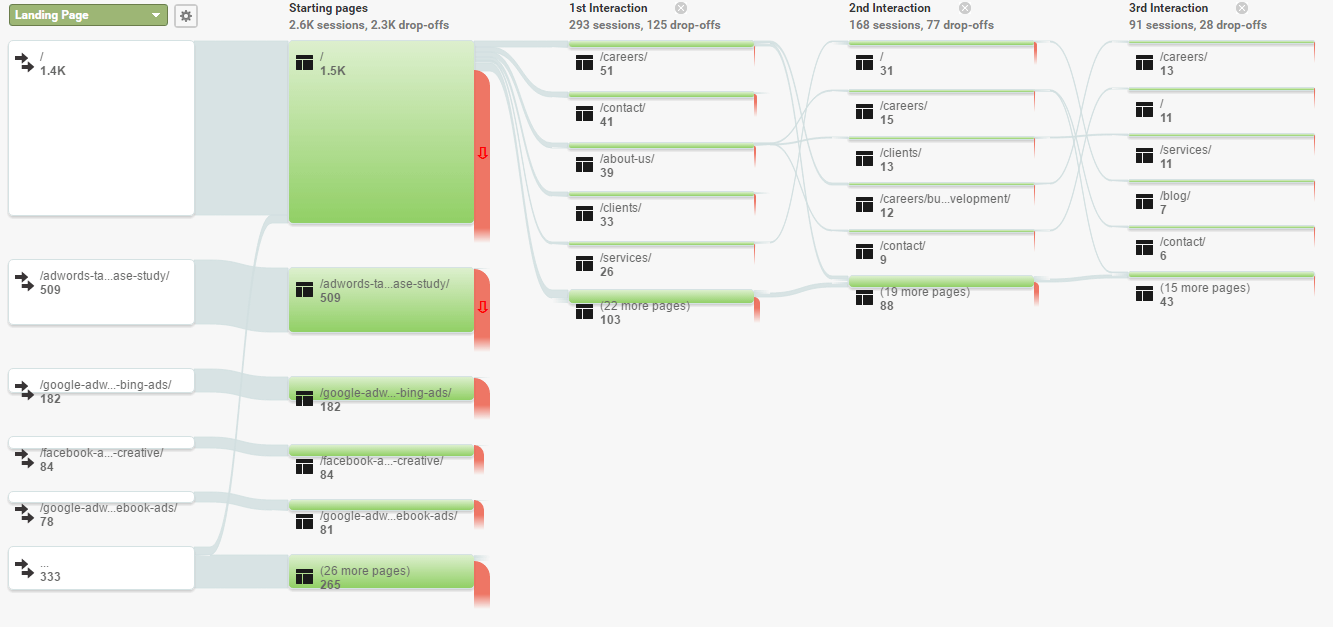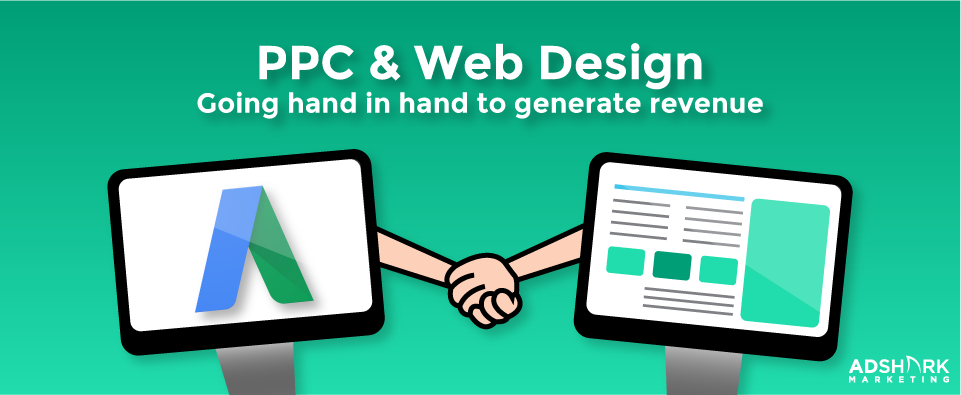PPC And Web Design – Going Hand In Hand To Generate Revenue
Before implementing any PPC campaign, it is important to have a web design that funnels users toward a specific goal otherwise it can be highly difficult to measure results. Whether you want to sell a product, get phone calls, downloads, or have them fill out a contact form, pay per click success begins when you optimize a website to convert.
PPC And Web Design
Advertising Is Half The Battle
Pay Per Click campaigns are useful advertising tools for sending qualified traffic to your website. When people search for your product or service, it is important to be visible to them so they are able to find you first among your competitors. Search advertising is unique in that you are only visible to an audience that desires your product, but if you are getting in front of that audience, you are only winning half the battle. The other half of the battle is that you must make sure a website is designed in such a way that the advertising campaign makes use of your site.
There are steps to take to ensure a website is ready to work for you after a click on your ad. Doing this correctly sends your customer on their buying journey. The last thing you want to do is to spend money on advertising without having a goal in mind. Results have to be attainable and measurable, and the design of your site plays into your search marketing strategy.
Keep The User Engaged
An ad functions as a means to get a customer to your website. After that, your website must function as a means to get a customer to choose to do business with you. Easy to follow designs as well as clear calls to action allow you to optimize your site for a truly useful user experience and provide a way for you to measure the results of your advertising. You don’t want to leave a user confused or wanting more once they reach your site. You only have one chance to keep them engaged with your business, so you don’t want to blow it. A web page can be relevant to what the customer was searching for, however, it might not have a clear call to action and be optimized to convert, missing out on leads, sales, or whatever you intended the site to generate.

Make Your Website Work For You
A design that favors conversions differs from the normal approach to web design. Web designers typically think in terms of what looks good, making a site look pretty. While it is important to have an aesthetically pleasing design, you also want to have the design serve a purpose. That’s why we use an approach that optimizes a site for conversions. By taking into account how easily a customer can purchase from you, you can optimize a site in order to make it work for you and better generate revenue. Then using Adwords and Bing conversion tracking, you are able to accurately see how many people performed a specific action on your site. By utilizing this strategy, you are able to calculate return on investment from your advertising efforts.
You want a customer searching for something you offer to be led to your website. It starts with a relevant advertisement, link etc. that acts as the first point of contact between your customers and you. After that, your website landing page has to reinforce your advertising message and lead them down a funnel that guides them to a specific action that is valuable to your business.
Do You Need To Redesign Your Website?
Does that mean that you need a complete website redesign in order to start using PPC advertising–not necessarily. Generally, there are small tweaks that can be made to your existing site in order to give the user some direction. It can be anything from changing your navigation titles, adding a get a quote button, adding a phone number, or reorganizing information and the order it is displayed, etc. Once your site has clear conversion goals, then a PPC campaign can be successfully implemented.
There are instances where a redesign is a more logical thing to do. If you currently have an old website that looks like it hasn’t been updated since the late 90s, it may be time for a complete redesign. With a new site, you are going to have more options to create pages based on how you want customers to behave on your site leading them to a conversion goal. The result of this is that you are going to keep people interested and give them enough information to lead them to a valuable action (example: getting a quote, contacting you, make a purchase, or calling) which brings you business.
5 Guidelines To A Well-Optimized Site
Here are 5 guidelines that can help you start improving your site, allowing you to take the necessary steps to increase your conversion rate:
1.) Have A Goal In Mind
Be sure you have a plan on what you want to accomplish on each page. Think about what you offer, how it is unique, and what you want the customer to do in order to make contact with your business. To do this you have to think like the customer and what problem do they want to be solved. Once you know what they want to be solved, lead them to a solution. By knowing what the customer wants, you can be in control of where they navigate to on your site. Each place they go should be moving them towards an action of value. Once you have made a plan, implement the changes on your site and be consistent with your strategy throughout.
2.) Relevance
A harmful mistake would be to send your customer to a generic page that has nothing to do with what they searched for or to send them to a page that has information on what they searched for, but no indicator of what to do next. If you’re just giving them information but no opportunity to convert, you are missing out.
Once they land on your page, it is important to make sure content is relevant to what they searched for, and customers have an enjoyable, useful experience. People today are used to getting what they want instantly, and if they don’t find that, they can instantly go look elsewhere.
3.) Call To Action
If you are an e-commerce store and you sell online, it is a no brainer that you have a “buy now” call to action. But if you are a service related business, having a call to action can be just as useful, it just has to be the right type. Leading a customer to a contact form, quote form, estimate, or a demo can ensure you are capturing a potential customer and closing the sale that otherwise wouldn’t have happened without a little help from you.
4.) Make Conversions Count
You want conversions, but even more so you want those conversions to be generating revenue. That’s why it is important to focus on the quality of conversion and not the quantity. Make sure the action a customer takes on your site is valuable to your business, not just getting a sign up for the sake of generating conversions. You want to be certain the sign ups you are getting are coming from people who have a genuine interest in what you have to offer.
5.) A/B Testing
It is important to always be testing variations of the layout and content of a page to see what combinations perform the best. This can be anything from call to actions, pictures, text, and colors. Making changes to all these elements can affect conversion rates. It is equally important to be sure you have a method for measuring the results of these changes.
In conclusion
Once your site is PPC friendly, then you are able to measure the results of how many of the customers that converted came from your PPC traffic with conversion tracking. In this way, you are able to see which campaigns are generating conversions on your site. Then using that information, we can scale up those campaigns to maximize your ROI. You can achieve this by having a combination of minor tweaks to your site and implementing a well thought out AdWords PPC campaign. It all has to do with relevance and targeting.
Additional questions
If you would like more information on getting the most out of your website and generating traffic to your business through search advertising, contact us today to learn more.
Ready To Grow?
Let's Talk!



